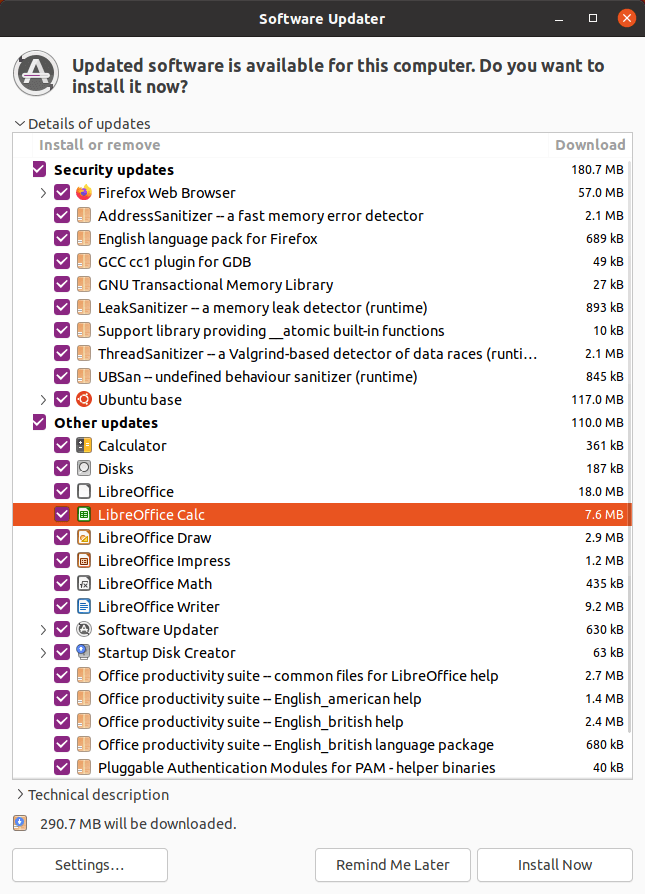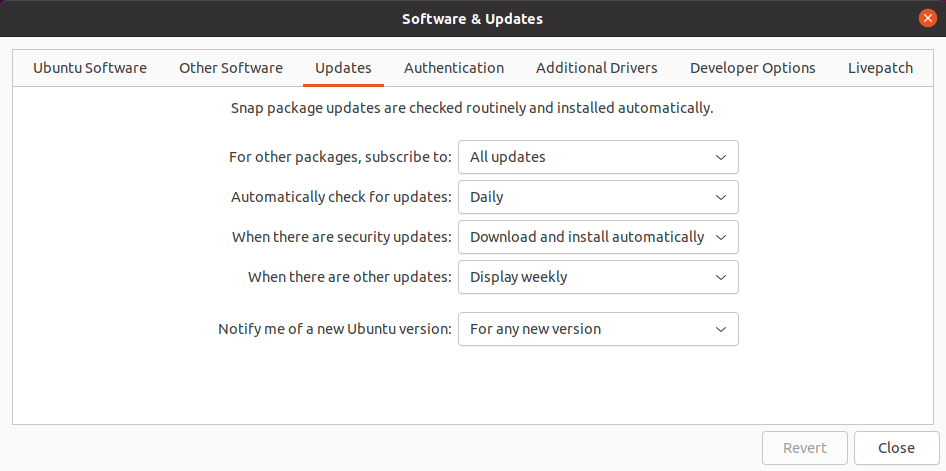Last Updated on May 22, 2022
This series offers a gentle introduction to Linux for newcomers.
After installing Ubuntu, you’re ready to use your new system. But there are some additional steps we recommend you first perform before using your new system. This article identifies 8 things you need to consider.
Let’s start with a no-brainer, an update of the system.
1. Update the System
When you boot to the graphical desktop for the first time, you’ll be asked to update the system. That’s because there are always updates released on a regular basis including security updates.
To update your system, click the Install Now button.

The Settings button takes you to the Updates section of Software & Updates. This lets you change things like the frequency of checking for updates.

You can also update your system at any time by issuing the command in a terminal:
$ sudo apt update && sudo apt upgrade -y
Next Page: Page 2 – Install Drivers
Pages in this article:
Page 1 – Initial Update
Page 2 – Install Drivers
Page 3 – Enable Backups
Page 4 – Video/Audio Codecs and TrueType Fonts
Page 5 – GNOME Tweaks
Page 6 – GNOME Extensions
Page 7 – Install BleachBit
Page 8 – Night Light and Summary
All articles in this series:

Why only cover Ubuntu?
From independent surveys Ubuntu is the most popular Linux distro. Ignore the charts you see on some web sites that often have fairly obscure distros top. Their fanboys just vote them up using bots, partly because they are very passionate about them.
Interestingly, Linus Torvalds (the creator of the Linux kernel) has never even tried Ubuntu.
What about the command line? Newcomers shouldn’t only use GUIs in my opinion.
How about what to do when app doesnt have a package?
How about as a Linux user you whine, cry and criticize ever tutorial and article ever printed? It really gets old. I use Linux, I use Ubuntu, I use other OS’s. I appreciate people with the skill and knowledge to write tutorials and articles that can help others. No article can cover ‘everything Linux”. Thank you Steve.
We welcome suggestions what information you think is helpful for newcomers to Linux. When you’ve been using Linux for as long as we have, it’s easy to overlook things which would help beginners.
We will be covering the command-line in a later part of this series. But there’s a few important areas we need to cover first.